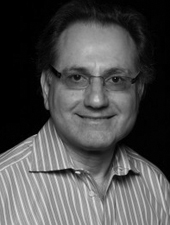ElHarouni, Dina, Al-Jazrawe, Mushriq, Choi, Seongmin, Dede, Merve, Hinoue, Toshinori, Misek, Sean A, Noh, Heeju, Zanella, Luca, Tseng, Yuen-Yi, Francies, Hayley E, Sridevi, Priya, Agarwal, Rachana, Kyi, Cindy W, Perez-Mayoral, Julyann, Stine, Megan, Tonsing-Carter, Eva, Clinton, James M, Laird, Peter W, Kuo, Calvin J, Elemento, Olivier, Spector, David L, Cherniack, Andrew D, Ellrott, Kyle, Ferguson, Martin L, Beroukhim, Rameen, Hoadley, Katherine A, Robine, Nicolas, McPherson, Andrew, Garnett, Mathew J, Tuveson, David A, Califano, Andrea, Spellman, Paul T, Ligon, Keith, Gerhard, Daniela S, Staudt, Louis M, Boehm, Jesse S (April 2025) Integrative clinical and molecular characterization of an international community resource of organoid models of human cancer. In: Cancer Research Annual Meeting 2025, 2025 Apr 25-30, Chicago, IL.
Abstract
The discovery of novel cancer therapeutics requires evaluation in representative laboratory models. However, existing model collections do not represent the full spectrum and scale of molecular diversity required to support biological discovery and drive pre-clinical research. Recent technologies have enabled more efficient derivation of cell-based models (e.g., organoids). However, systematic pan-cancer comparisons of the integrity of genomic, transcriptomic and epigenomic states following long term ex vivo expansion remain elusive. Here, we report on a large-scale international program—the Human Cancer Models Initiative (HCMI), consented more than 2,500 donors resulting in the production and subsequent characterization of 665 organoid, neurosphere and cell line models by whole genome, exome, methylome, and transcriptome analysis. Critical properties of the donors and tissues included 71 derived from populations beyond European ancestry, primarily African (54%), Asian (45%) and Indigenous American (1%); 448 have therapeutic treatment profiles from donor medical records, and 45 represented rare cancers. Integrative analysis between models and source tumors shows that 92-96% of 417 analyzed models were highly concordant by molecular characterization. The small number of discordant behaviors were associated with either cell culture media influences in glioblastoma or stromal infiltration or rare cell differentiation state shifts, which were validated by single cell RNA sequencing. We validate the utility of the resource studying therapeutic resistance to chemo-, targeted-, and immuno-therapies by integrative analysis of extrachromosomal DNA-based gene amplification and post-treatment mutational signatures. This internationally accessible community resource, including data and accompanying integrative software tool packages, provides a roadmap for capturing an increasing spectrum of cancer diversity in preclinical models.
| Item Type: | Conference or Workshop Item (Poster) |
|---|---|
| Subjects: | diseases & disorders > cancer diseases & disorders Investigative techniques and equipment Investigative techniques and equipment > cell culture > cancer organoids Investigative techniques and equipment > cell culture |
| CSHL Authors: | |
| Communities: | CSHL labs > Spector lab CSHL labs > Tuveson lab |
| SWORD Depositor: | CSHL Elements |
| Depositing User: | CSHL Elements |
| Date: | 21 April 2025 |
| Date Deposited: | 15 Jul 2025 13:06 |
| Last Modified: | 15 Jul 2025 13:06 |
| Related URLs: | |
| URI: | https://repository.cshl.edu/id/eprint/41906 |
Actions (login required)
 |
Administrator's edit/view item |


